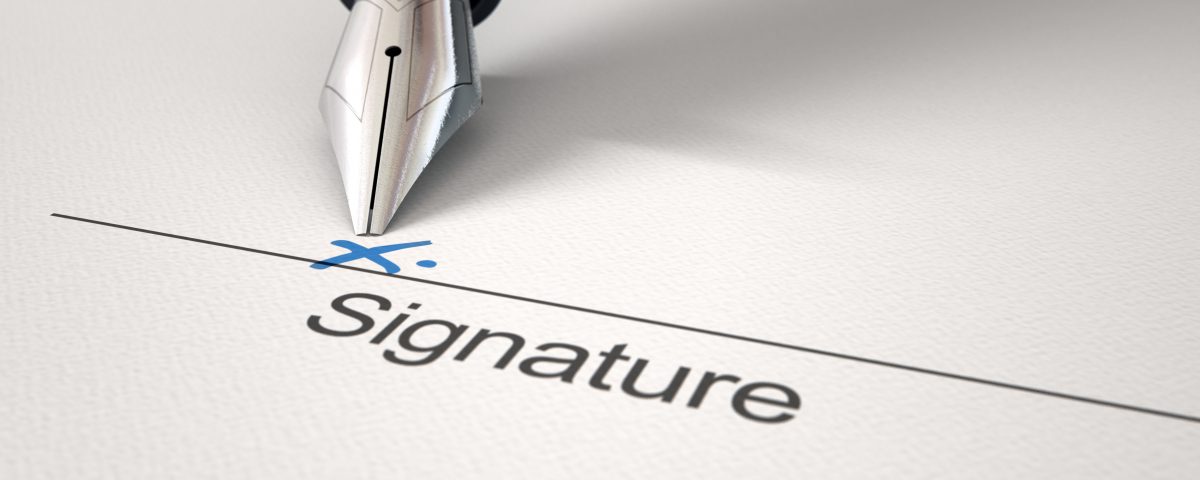
Preparing for a Notarization
December 31, 2018
Common Notarial Acts
February 28, 2019There is a mobile optimized version of this page, view AMP Version.
People have been leaving their mark for thousands of years. Most often, a signature simply consists of the name of the party involved. Other times, it may be just a mark. Signatures can come in all kinds of forms, including signature stamp, handwritten, digital certificate, and even typed on a document. A signature can even be as simple as checking a box when reading a user agreement on your iPhone.
This evolution has led to challenges for notaries. Notaries must verify the authenticity of signatures appearing on documents. But what actually qualifies as a signature? What features make a signature acceptable? How do you tell when a typed name, checked box, or symbol is an authentic signature?
What Is a Legal Signature?
A signature is seen under the law as a symbol or mark that the signer has decided will represent his or her way of authenticating a document. It can range from a typed name to a handwritten name to a signature stamp or some kind of symbol. When documents are signed before a notary, any of these types of signatures are acceptable.
If the signer cannot physically write a name or symbol, the signer can authorize another person to sign on his or her behalf. Only the signer (not the notary) can state whether or not he or she is unable to sign and whether there is a need for an alternative method.
Notarization of a Signature by a Mark or Symbol
A signature by mark or a symbol can be as simple as an X or other symbol or an image of the individual’s signature on a stamp.
In some states, this type of signature notarization can only happen in front of two witnesses, with a clear note that the signer used a mark to sign the document. Elsewhere, notarization of such a signature is done the same way as others. Regardless of how the notarization is handled, a detailed journal entry should be made.
Signature Notarization by a Surrogate
Laws that define how signing by surrogate ought to be done and how notarization of that signature is supposed to take place vary by jurisdiction. Where no such law exists, a notary should permit a third individual to append a signature on the signer’s behalf. Of course, this is after the signer gives consent.
The circumstances surrounding the signature should be noted in a journal entry and also in the notarial certificate.
How to Handle an Illegible Signature
Ending up with a completely illegible signature is a possibility. A notary is able to identify whose signature it is by looking at the upended name. So it is important to write the signer’s name in both a journal entry as well as in the notarial certificate. Apart from cross-checking the information on the ID of the signer, the notary should also require a signer to append a signature for every entry made in the journal.
Original vs Copies of Signatures
Only original signatures on paper documents can be notarized and not those appearing on photocopied papers.
Be Compassionate
If a person is mentally competent, you have no reason to deny him or her notarization services just because they cannot write a traditional signature. Find a way of accommodating such an individual within the law. As long as you can properly identify the signer, you can notarize his or her signature.
Coast 2 Coast Signings is a global signing service dedicated to providing the most convenient, efficient, and professional signing services. Our goal is to provide our clients with excellent customer service, a knowledgeable staff, and the ability to find experienced notaries wherever and whenever they are needed. Our team is on staff 24/7 to fulfill any of your signing needs. With a combined 50 years of experience, our mission is to help fulfill our clients’ needs with the utmost respect and adaptability. Coast 2 Coast is the only signing company proficient in completing signings on a global scale, on any coast and in any country.

